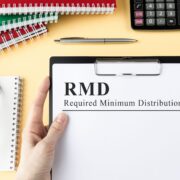IF YOU’RE NOT GOOD AT preserving a family spending plan, you’re not alone. Numerous households run without a budget, and even those who think they are budgeting may not in fact be doing so.
How to Make a Budget –– and Stick to It
Almost 60% of people state they do not track costs, and 2 in 5 have never ever had a budget, according to a 2019 report from the Certified Financial Organizer Board of Standards. For their research study, the company surveyed 300 adults between the ages of 35 to 65 who had investable possessions of at least $100,000 in 2018. Among those who reported having a budget plan, 43% explain their budget as a tracking tool instead of a way to plan where their money will go in advance.
However, the budgeting process includes more than just taping invoices and analyzing costs practices. The following are nine essential steps for making a family spending plan:
- Bring both partners together.
- Create goals.
- Track earnings and expenses.
- Evaluate your existing situation.
- Trim costs.
- Build savings.
- Leave debt.
- Lower your taxes.
- Sign infrequently.
“The major goal of budgeting is that you must be living within or just listed below your monetary capability,” states David Luebke, founder of Simplified Spending plan, an approaching online software platform. Here’s a closer take a look at how the budget plan process must work.
Bring Both Partners Together
A budget will never ever work if the grownups in the family aren’t on the same page. Before you start crunching the numbers, have a frank discussion with all decision-makers in your home to hash out shared and specific financial objectives.
“With partners, truly find what is necessary and eliminate the regret and the shame,” says Charlene Quaresma, a monetary advisor with Northwestern Mutual in Portland, Oregon.
If having nice shoes is important to a single person, the other partner doesn’t get to slam or demean that choice. Similarly, if somebody prefers saving to spending, their choice must be respected. However, both partners need to understand and accept that compromise may be essential to produce a budget plan that works for the whole family.
Produce Goals
Whether your budget plan prospers or stops working could depend mainly on whether it aligns with your individual and family priorities. “It truly begins with going over worths and objectives,” states Eric Rosenberger, a certified financial coordinator and partner with Synthesis Wealth Preparation in Morristown, New Jersey.
Decide together what is very important to your household. That could be one mom and dad staying at home to raise kids, early retirement, or comprehensive travel. “When you prioritize a goal, you require to decide if it’s even achievable,” Rosenberger says. If it’s realistic, produce your budget so it will funnel money toward that objective.
Track Income and Costs
Prior to you can compose a budget plan, you require to understand your current monetary scenario. Begin by tracking or examining 60 days’ worth of transactions through your bank and credit card accounts. This will be vital to recognizing what money gets lost in your family’s black hole.
“The great void is money you could either conserve or spend (intentionally), however, it frequently just disappears,” Quaresma says. Understanding where financial leaks are will assist you to change spending routines.
This doesn’t have to be a long or arduous procedure either. Many banks and credit cards will aggregate account details and produce income and expenditure reports. You can likewise rely on useful and complimentary budgeting tools, such as apps from Mint and Personal Capital.
Evaluate Your Present Scenario
As you track expenditures, place them into classifications that make good sense, such as real estate, entertainment, dining out, and financial obligation payments. However, don’t make the error of getting slowed down in this procedure. “Individuals get far too comprehensive,” Luebke says. “It consumes a lot of the time that they simply stop.”
Once you know how much you invest in each category, identify which expenses are repaired and which alter throughout the year. It’s also helpful to identify which classifications are discretionary, implying they cover expenditures that are good but unnecessary for your household.

Trim Expenses
If costs in one classification are too expensive or if there is no cash left over for cost savings or debt payment, it’s time to trim costs. For instance, dining out tends to be a drain on many budget plans. Menu planning, shopping sales at the grocery store, and purchasing products in bulk can all reduce the expense of groceries and make it more cost-effective to consume at home. Cable, subscription services and impulse purchases made online are also low-hanging fruit when it pertains to lowering home spending.
Large households might need to make some changes for food and clothes, however, adding another kid isn’t always going to increase set costs such as a home mortgage payment or energy costs. “The size of the household would not dramatically alter someone’s spending plan,” Luebke says. “What truly impacts budgeting is the number of (income) contributors.” Budgeting in one-income households might be more challenging than it remains in two-income households.
Running out of energy is a bigger threat than lacking cash for parents of large households, Quaresma says. “You get tired and you tend to toss money at a problem,” she discusses. Worn-out parents might be most likely to go through the drive-thru at dinnertime, employ a cleaner, or otherwise spend for services that they would complete on their own. Mommies and daddies might require to decide if their time is worth the cash spent on these items.
Build Cost Savings
Cost savings must be a leading priority for any cash left over after month-to-month expenses are paid. While it may be tempting to focus on paying for debt initially, an emergency situation fund is equally essential. Keeping enough cash in cost savings to cover 3 to six months of expenditures is a common guideline.
After an emergency situation fund, retirement is the next cost savings priority. Work environment 401( k) accounts and Individual retirement accounts provide tax incentives, making them a great area to deposit money for retirement. Lots of employers will match worker 401( k) contributions as much as a particular portion, and employees ought to contribute a minimum of enough to their retirement plan to receive the whole match. “We don’t desire our customers to lose out on any totally free cash,” Rosenberger states.
Leave Debt
Part of the budgeting process is balancing the requirement to pay off debt with the need to conserve for the future. While having an emergency fund is very important, it might be best to move your focus to financial obligation payment after that. If a debt charges higher interest than cost savings would yield, it may be much better to pay down debt than increase cost savings beyond what is required.
Complicating the matter is the truth that some debt features tax advantages. For instance, as much as $2,500 worth of student loan interest can be subtracted from federal earnings taxes, and home loan interest can be consisted of on itemized reductions.
Nevertheless, the Tax Cuts and Jobs Act of 2017 implies people require to reassess some tax reductions. The law almost doubled the standard deduction, implying far fewer people are making a list of and thus taking advantage of a home mortgage interest reduction. Considered that, there may be little benefit to keeping a home mortgage nowadays.
Lower Your Taxes
Do not ignore the importance of taxes when budgeting. Minimizing the quantity you pay to the government can maximize cash for other top priorities. What’s more, putting cash aside into tax-advantaged accounts can help guarantee you’ll have funds readily available for future expenses such as healthcare, college, and retirement.
If you have a certified high-deductible medical insurance prepare for your family, you can subtract as much as $7,100 transferred into health savings account in 2020. That cash is likewise tax-exempt when utilized for medical expenses. For college savings, think about a 529 plan which does not offer an instant federal tax deduction however may have state tax benefits. These accounts grow tax-free and can be utilized tax-free for qualified education costs.
As for retirement, a conventional 401( k) or Individual Retirement Account provides an instant tax deduction on contributions. Withdrawals in retirement go through tax, though. If you want to avoid paying taxes later on in life, usage Roth accounts instead. Contributions to Roth 401( k) accounts and Individual retirement accounts aren’t deductible, however, the cash grows tax-free and can be withdrawn tax-free after age 59 1/2.
Examine-in Often
When finished, a budget ought to serve as a roadway map for how a family prepares to spend its money moving forward. To be efficient, it needs to be spoken regularly to make sure actual family spending remains in line with what is written. As family situations or priorities change, the budget plan can be changed.
“When you have a budget in place, some individuals take a look at it as a game,” states Michael Gerstman, CEO of Gerstman Financial Group in Dallas. They may challenge themselves to conserve a certain quantity of money or reach a specific balance in the bank. “Reaching your goals is fun,” Gerstman includes.
Meeting regular monthly to review the previous month’s costs and eagerly anticipate the coming month’s expenses can help partners remain on top of family finances. Combining a spending plan evaluation with a date night can be an excellent way to make this procedure feel less like a chore. Regardless of how you structure check-ins, remember all partners are on the same team and should collaborate to reach financial objectives.





















Comments